By Al Hemingway
The Alamo in San Antonio has long been referred to as the “Cradle of Liberty” for modern-day Texas. Hollywood has portrayed Jim Bowie, William Barret Travis, and Davy Crockett as courageous individuals who banded together to fight the evil Mexican hordes of General Santa Anna, who traveled to Texas to crush the rebellion led by upstart “Texians.”
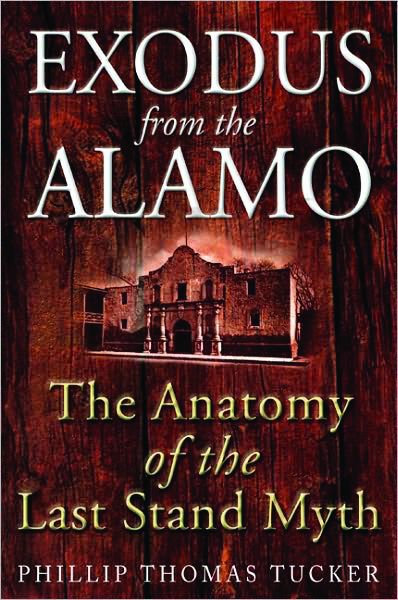 Through the years, however, reliable evidence has surfaced that tells a far different story of what really transpired at the Alamo. Much of this historical information, unfortunately, has received scant attention from American historians because these accounts are from Mexican soldiers who witnessed the massacre firsthand on that cold, wintry day in early March 1836.
Through the years, however, reliable evidence has surfaced that tells a far different story of what really transpired at the Alamo. Much of this historical information, unfortunately, has received scant attention from American historians because these accounts are from Mexican soldiers who witnessed the massacre firsthand on that cold, wintry day in early March 1836.
Historian Philip Thomas Tucker’s new book, Exodus From the Alamo: The Anatomy of the Last Stand Myth (Casemate, Havertown, PA, 2010, 432 pp., index, notes, photos, $32.95, hardcover), goes into great detail about that fateful day and the events leading up to it. Tucker also explores the political, social, and economic picture that drove thousands of would-be entrepreneurs to Texas in the first place, with dreams of acquiring enormous parcels of land once they drove the Mexican “oppressors” from their land.
Tucker cites two main reasons that Texas real estate was highly sought after: land and slaves. Many “Texians,” including Sam Houston and Stephen F. Austin, had visions of a huge plantation-style empire in the Lone Star State. Mexico had abolished the “peculiar institution” in 1829 and outlawed the importation of slaves into Texas. This sent shock waves throughout the territory. Anglo residents were disgusted by the comparatively liberal racial views of Mexicans, who allowed marriages between themselves, blacks, and Native Americans.
Ironically, their racist views of their Mexican foe blurred their view of reality. Most defenders of the Alamo sincerely believed that their racial superiority—and their Kentucky long rifles—could defeat any army that Mexico could field against them. Even Crockett, an antislavery advocate himself, boasted that he “would have Santa Anna’s head” before the battle was over.
Tucker points out the stupidity of even attempting to defend the Alamo, a Spanish mission that was originally built, not as a fortress to keep armies at bay, but as a church and a safe haven for people to escape Indian attacks. A better strategy would have had Travis’s men link up with the Texian forces at Goliad, a town of more strategic value, and employ guerrilla-type activities until Houston could recruit and train a larger army to face Santa Anna.
No work was done to shore up the Alamo’s inadequate fortifications. Instead the defenders spent much of their time in San Antonio de Bexar drinking, gambling, and discovering the charms of the young female population. They were in short supply of gunpowder and ammunition. Although they had a sizable number of artillery pieces, it would prove virtually useless during the final assault. Most Texians within its walls had little or no military experience, especially as artillerymen.
Santa Anna’s force, on the other hand, was a very experienced lot. Among his prized units was his cavalry, which would play an important role during the campaign. The wily Mexican general kept the defenders on edge throughout the 13-day siege. His constant artillery bombardment afforded the defenders little sleep, a literally nerve-wracking experience for the increasingly exhausted men.
When the final attack came, it was not (as legend has it) during daylight hours with the riflemen on the parapets taking careful aim and killing swarms of Mexican soldiers. Instead, it came in the predawn hours while most of the defenders were catching what sleep they could manage. The Mexicans easily scaled the north wall and were inside the compound within minutes. What ensued was a wild and confusing confrontation in the inky blackness, with many Mexican infantrymen being mistakenly shot by their own troops.
It is believed that as many as half of the Alamo defenders tried to escape via the south and west section of the old mission. Santa Anna had anticipated this and stationed his cavalry in these areas. As the men raced from the fort, they were systematically cut down by the dreaded lancers. What became of the holy trinity of Crockett, Travis, and Bowie? According to Tucker, there is strong evidence to suggest that Travis actually committed suicide instead of being struck by a Mexican bullet in the first moments of the battle. Bowie had fallen ill with typhoid fever and died in the makeshift hospital. Crockett’s demise remains a mystery. He could have been with a large contingent of Tennesseans who attempted to flee and was cut down by lancers. Other accounts have him being shot early in the battle, or captured and executed afterward.
To this day, many historians discount the attempted breakout from the Alamo as fantasy. But when the Mexicans burned the bodies, they were well outside the mission. Why would they drag the remains of their hated enemy hundreds of yards uphill to burn them? The answer is simple, says Tucker. They where burned where they were slain.
Tucker has written a remarkable account of one of America’s pivotal military actions. Whatever the truth of their demise, the heroic defenders became instant martyrs, and the cry of “Remember the Alamo!” was on everyone’s lips. In reality, it was a battle that should have never been fought at all.
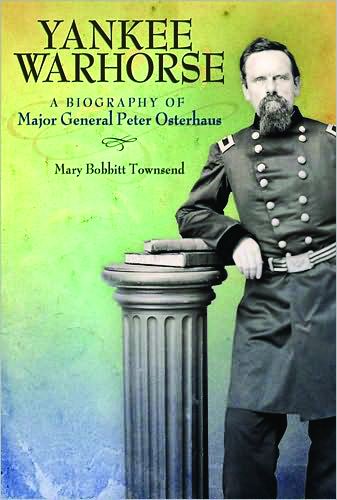 Yankee Warhorse: A Biography of Major General Peter Osterhaus by Mary Bobbitt Townsend, University of Missouri Press, Columbia, 2010, 270 pp., index, notes, photos, $39.95, hardcover.
Yankee Warhorse: A Biography of Major General Peter Osterhaus by Mary Bobbitt Townsend, University of Missouri Press, Columbia, 2010, 270 pp., index, notes, photos, $39.95, hardcover.
What makes this biography of German-born Peter Joseph Osterhaus so detailed and intriguing is the fact that his great-great-granddaughter authored it. She had access to his personal papers, which have never been published, to create a three-dimensional portrait of her relative, not just a cardboard character with no human emotion.
Osterhaus had already led an extraordinary life prior to arriving in this country. He took part in the German revolution in 1848-1849 and commanded the rebel troops at Mannheim, Baden. When the uprising collapsed, he was forced to flee his native Germany and make his way to the United States. He settled in Bellville, Illinois, which had a thriving German-speaking community. He quickly acclimated to his new home, and soon was a successful businessman and community leader, with a good command of the English language, although always with a thick German accent.
When the Civil War erupted, Osterhaus enlisted as a private at the age of 38. At the end of just two weeks, people took notice of his military bearing, and he was promoted to major of the 2nd Missouri Volunteer Infantry. He displayed exceptional courage at Wilson’s Creek, where he was fascinated with the artillery, which he viewed as essential to obtaining victory on the battlefield. Osterhaus recruited his own regiment, the 12th Missouri Volunteers, and was promoted to colonel by Maj. Gen. John C. Fremont, commander of the Department of the West.
Osterhaus’s rapid rise was not due to any political patronage. He was a competent leader who actually cared for the welfare of his men, not sending them on futile frontal assaults unless absolutely necessary. He was soon promoted to major general in Ulysses S. Grant’s army, and served during the lengthy Vicksburg campaign as division commander, the only ethnic general to be given a command of nonforeigners.
Osterhaus participated in the Chattanooga campaign at the Battles of Lookout Mountain, Ringgold Gap, and Missionary Ridge. During the subsequent Atlanta campaign, he fought at Resaca, Kennesaw Mountain, and Jonesboro. He accompanied Maj. Gen. William T. Sherman on his infamous March to the Sea in 1864 and took part in the fighting at Mobile Bay at war’s end.
After the war, Osterhaus was given the difficult assignment of military governor of Mississippi, a post he held for six months. He subsequently was appointed U.S. consul in Lyon, France, where he served for 11 years. He returned to his native land as U.S. vice-consul in Mannheim, Germany.
In January 1917, Osterhaus passed away at the age of 93. It is probably a good thing he died. The shock of seeing his beloved Germany and his adopted homeland of America at war with each other might have killed the old Yankee warhorse, anyway.
 The War For Ireland, 1913-1923 by Peter Cottrell, Brendan O’Shea, and Gerry White, Osprey Publishing, New York, 2009, 248 pp., index, photos, maps, $28.50, hardcover.
The War For Ireland, 1913-1923 by Peter Cottrell, Brendan O’Shea, and Gerry White, Osprey Publishing, New York, 2009, 248 pp., index, photos, maps, $28.50, hardcover.
This account of the bloody struggle for Irish independence was first published in Great Britain late in 2009 and is now for sale in this country. The authors have written an intriguing book that traces the roots of Irish nationalism, beginning in the 12th century and culminating with the terrible civil war that nearly tore the country apart after it had gained partial freedom from England.
Interestingly enough, many Irish were not in favor of having the authority of the Crown completely out of Ireland, but rather wanted to establish a dual monarchy similar to Austro-Hungarian rule. The Anglo-Irish, on the other hand, wanted to be fully removed from under the boot heel of English dominance.
The book goes into great detail about the Easter Rebellion of 1916, which was led by such Irish legends as Eamon de Valera, Sir Roger Casement, James Connolly, Joseph Plunkett, and Patrick Pearse. The British were completely unaware of what was transpiring. Soon, the rebels had seized two dozen strategic locations within Dublin, including the General Post Office, and established barriers on key city streets and intersections. The British troops, numbering about 2,500 within the city proper, were soon reinforced. In less than a week, the rebellion was crushed, and many of its leaders subsequently were executed. British troops sustained 550 casualties, the rebels only 200. The civilian population, by contrast, suffered 2,500 dead or wounded before the uprising was all over.
After the Easter Rising, Ireland was the scene of horrific guerrilla-style fighting. It also witnessed the increasing popularity of the Irish Republican Army. Spearheaded by the legendary Michael Collins, the IRA organized a hit team to systematically kill British political figures, soldiers, and police. British forces responded with equally harsh tactics that drew severe criticism from other nations, but did not deter the ruthless English.
Ireland finally agreed to negotiate a peace with Great Britain. Unfortunately, those who did not favor the treaty rose up in armed rebellion against their former comrades. For two years, the country was embroiled in a civil war, and Collins himself was assassinated by IRA gunmen. The conflict finally ended in 1923.
Even today, Ireland is still attempting to come to terms with her past. As historian Oliver Knox commented: “There is no such thing as Irish history at all—the past, the present and the future being the same thing, one and indistinguishable.”
 The Poison King: The Life and Legend of Mithradates, Rome’s Deadliest Enemy by Adrienne Mayor, Princeton University Press, Princeton, NJ, 2010, 472 pp., index, notes, maps, illustrations, $29.95, hardcover.
The Poison King: The Life and Legend of Mithradates, Rome’s Deadliest Enemy by Adrienne Mayor, Princeton University Press, Princeton, NJ, 2010, 472 pp., index, notes, maps, illustrations, $29.95, hardcover.
Surprisingly little has been written about Mithradates, one of Rome’s bitterest rivals. Born in Pontus, a Hellenistic-state of Persian origin situated on the Black Sea, in present-day Turkey, Mithradates had a hard childhood. His father died when he was quite young, and his jealous and ambitious mother wanted to remain queen, creating plots against her own son’s life. He fled from home at an early age and, as legend has it, he supposedly lived in the woods, which hardened him for his future reign over the country.
Mithradates was a natural military genius. At its pinnacle, his kingdom stretched from Europe to Asia. By freeing many of the Greek states and Asian regions, he garnered support against the repressive rule of Rome. He fought three separate wars against the Roman legions and faced some of Rome’s top leaders of the era.
Although he ruthlessly massacred an estimated 80,000 Romans who resided within his empire, Mithradates was also a man of some culture. He was a lover of the arts, botany, literature, and music, and even had an opera written about his life by Mozart in 1770. Legend says that he developed an antidote against poison that European royalty eagerly sought many years later.
When he was finally beaten by Rome’s legions, Mithradates fell into obscurity. Although his death has been attributed to suicide, it is still shrouded in mystery. When the greatest leaders of the ancient world are discussed, Mithradates’s name should definitely be included among them.
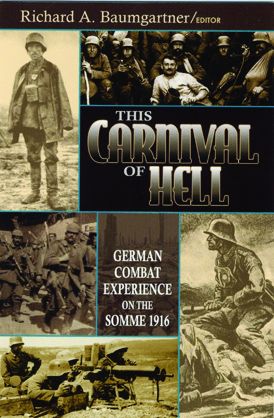 This Carnival of Hell: German Combat Experience on the Somme 1916 edited by Richard A. Baumgartner, Blue Acorn Press, Huntington, WV, 2010, 427 pp., index, photos, $39.00, hardcover.
This Carnival of Hell: German Combat Experience on the Somme 1916 edited by Richard A. Baumgartner, Blue Acorn Press, Huntington, WV, 2010, 427 pp., index, photos, $39.00, hardcover.
The Battle of the Somme was one of the bloodiest affairs in the annals of warfare. From July to November 1916, British and French forces slugged it out with the German Army on the Western Front during World War I. On the first day of fighting alone, the British suffered 60,000 casualties, including a staggering 20,000 killed. When it was over, an estimated 1.5 million men had been killed or wounded in the battle.
Author Richard Baumgartner has a keen interest in World War I and corresponded with numerous German veterans of the Somme campaign in the late 1970s and early 1980s. The Wisconsin native and newspaper journalist has compiled their incredible stories into a highly effective oral history and narrative format.
As the battle slowly grinded on, the terrain in the region took on an air of surrealism. Bombed-out villages, landscape filled with craters from exploding shells, and the unforgiving trenches where both sides resided amid the death and squalor, were indelibly etched in the minds of the survivors. “At least a fifth of them died in this small region of France, their lives snuffed out amid horrific scenes wholly unimaginable before the war started in 1914,” writes Baumgartner. “Of the survivors, probably very few really emerged unscathed.” This is their story.
 Road of 10,000 Pains: The Destruction of the 2nd NVA Div. by the U.S. Marines, 1967 by Otto J. Lehrack, Zenith Press, Minneapolis, MN, 2010, 320 pp., index, photos, $30.00, hardcover.
Road of 10,000 Pains: The Destruction of the 2nd NVA Div. by the U.S. Marines, 1967 by Otto J. Lehrack, Zenith Press, Minneapolis, MN, 2010, 320 pp., index, photos, $30.00, hardcover.
The 273-mile expanse of Vietnam’s Que Son Valley, situated in Quang Nam Province, is rich, fertile land, ideally suited for harvesting rice and salt, both much-sought after food items. Although peaceful today, for a seven-month period in 1967, it was the scene of a bloody and intense struggle for that important region during the Vietnam War.
Otto Lehrack is a former Marine with two tours of duty in Vietnam under his belt. He has taken the words of more than 100 leathernecks who were veterans of the campaign in the Que Son Valley to tell their story. Numerous operations such as Union, Union II, Swift, and Beaver Cage were conducted to drive the enemy from the vital area. The North Vietnamese desperately wanted to maintain a strong presence to gain access to the food and to recruit as many villagers as they could to join their ranks against the American and South Vietnamese forces.
Thanks to the men of the Old Breed, the 1st Marine Division, the enemy never gained a foothold in the valley. The combat was unrelenting, but the leathernecks kept the pressure on. More than 900 Marines and 6,000 NVA soldiers would die in the ensuing campaigns. A host of decorations were awarded that attested to the savagery of the fighting. Five Marines and one U.S. Navy chaplain, Father Richard Capodanno, would receive the Medal of Honor posthumously. An additional 27 Navy Crosses and 84 Silver Stars were given for heroism.
When Lehrack returned to Vietnam and toured the Que Son Valley, former NVA officers confirmed to him that the losses they sustained in the Que Son Valley had a detrimental effect on the major 1968 Tet offensive. This can all be attributed to the infantrymen of the 1st Marine Division.
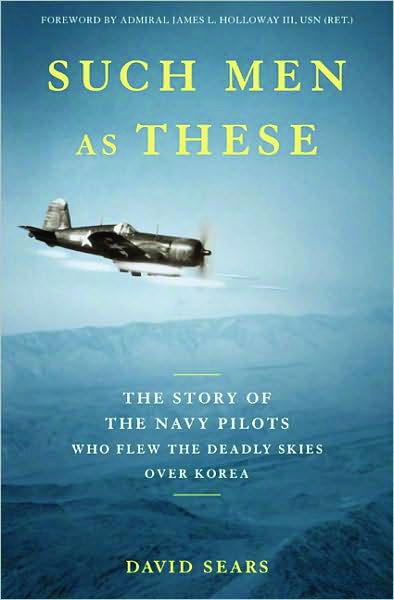 Such Men as These: The Story of the Navy Pilots Who Flew the Deadly Skies Over Korea by David Sears, DaCapo Press, Cambridge, MA, 2010, 384 pp., notes, index, photos, $25.00, hardcover.
Such Men as These: The Story of the Navy Pilots Who Flew the Deadly Skies Over Korea by David Sears, DaCapo Press, Cambridge, MA, 2010, 384 pp., notes, index, photos, $25.00, hardcover.
Not nearly enough has been written about the Korean War. Sandwiched between World War II and Vietnam, the “forgotten war” is usually ignored when it comes to historical or literary accounts.
The author gleaned the notes for James Michener’s bestselling novel The Bridges at Toko-Ri and found the real-life pilots whose aerial exploits were the basis for Michener’s novel. Sears’s account tells of the harrowing ordeal of going “feet wet” off a carrier off the coast of the Korean peninsula, flying over unforgiving terrain, dropping ordnance, and returning their aircraft. During the country’s bitter winter months, high winds in the Sea of Japan and snow and ice-covered decks made landing on ocean-going vessels especially dangerous.
“At a pivotal point in history, America and its free and like-minded allies stood firm and turned back totalitarian aggression,” wrote Admiral James L. Holloway III, USN (Ret.) in the foreword of the book. “The contrasting circumstances of democratic South Korea and totalitarian North Korea speak volumes. Korea may well be the ‘forgotten win.’”
The Politically Incorrect Guide to the Vietnam War by Phillip Jennings, Regnery Publishing, Washington, D.C., 2010, 244 pp., notes, index, $19.95, softcover.
As author Phillip Jennings accurately points out, it is not politically correct to say that the United States won the Vietnam War. But Jennings, himself a Vietnam veteran, maintains that less than universal opinion.
No matter how much the politicians tried to thwart victory with their misguided attempts at being military strategists, he says, America still emerged the victor on many fronts. The 1968 Tet offensive, proclaimed as a resounding win for North Vietnam, was an unmitigated military disaster for Hanoi. The U.S. press reported the offensive as a resounding success for the communists, making the campaign a political victory for them and turning many Americans against the war.
When left to its own devices after the American withdrawal, South Vietnam lost the war by itself, in a way “that is painful to contemplate,” Jennings writes. “No war in American history is in greater need of a politically incorrect—another word for honest—treatment than the Vietnam War.” His book is an attempt to meet that self-imposed challenge.
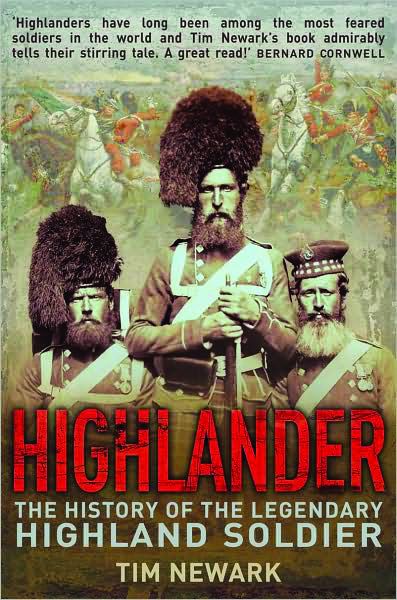 Highlander: The History of the Legendary Highland Soldier by Tim Newark, Skyhorse Publishing, New York, 2010, 320 pp., notes, index, $24.95, hardcover.
Highlander: The History of the Legendary Highland Soldier by Tim Newark, Skyhorse Publishing, New York, 2010, 320 pp., notes, index, $24.95, hardcover.
From the days of Bonnie Prince Charlie and his Jacobite rebels at the Battle of Culloden in 1746 to the modern-day conflicts in Iraq and Afghanistan, the Highlander regiments of the British Army have left their mark.
The Scottish Highlanders lost at Culloden, but another 1,000 Highlanders also fought on the British side because of a long-standing feud between clans. The Duke of Cumberland paid tribute to the hard-fighting Scots when he wrote: “General Hawley had, by the help of our Highlanders, beat down two little stone walls, and came in upon the right flank of their second line.”
In March 2006, the British government announced that all Scottish battalions within the newly organized army would no longer wear kilts. Highlander veterans came out in droves to protest the move, but to no avail. Recruitment dropped off accordingly. Despite the end to a very proud tradition, Highlander outfits are stationed in harm’s way to this day. While on foot patrol in Afghanistan in 2008, Sergeant Jonathan Matthews was cut down by Taliban insurgents when he charged their position.
“Highlanders have and always will be ‘stormers,’” writes Newark, “it is their very nature.”
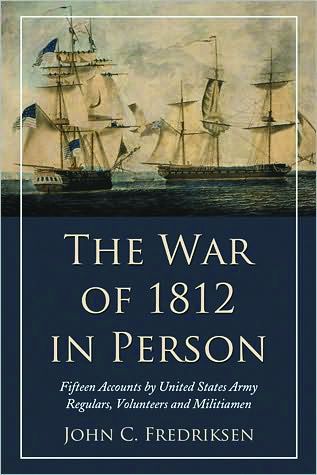 The War of 1812 in Person: Fifteen Accounts by United States Army Regulars, Volunteers and Militiamen edited by John C. Fredriksen, McFarland & Company, Inc., Jefferson, NC, 2010, 324 pp., illustrations, index, $45.00, softcover.
The War of 1812 in Person: Fifteen Accounts by United States Army Regulars, Volunteers and Militiamen edited by John C. Fredriksen, McFarland & Company, Inc., Jefferson, NC, 2010, 324 pp., illustrations, index, $45.00, softcover.
The War of 1812 is perhaps America’s least understood conflict. Many Americans felt it was justified because of the unlawful impressment of U.S. seaman and concerns that the British were stirring up various Indian tribes with anti-American sentiments to undermine the fledgling United States and eventually win back the colonies. These and other reasons propelled an ill-prepared American Army to once again face their British counterparts on the battlefield.
This book does not go into the larger scope of the war, but rather concentrates on the soldiers in the field. The editor has collected accounts of 15 soldiers that represent a good cross-section of officers and enlisted men. These vignettes add a personal and human touch to the war, describing their frustration, anger, and sense of abandonment throughout the fighting.
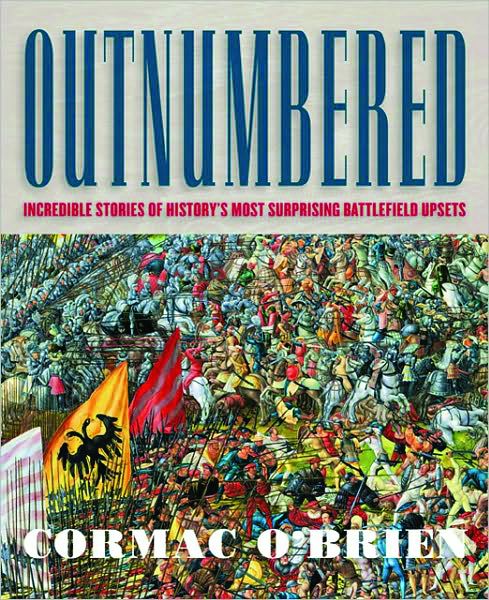 Outnumbered: Incredible Stories of History’s Most Surprising Battlefield Upsets by Cormac O’Brien, Fair Winds Press, Beverly, MA, 2010, 273 pp., illustrations, maps, index, $19.99, softcover.
Outnumbered: Incredible Stories of History’s Most Surprising Battlefield Upsets by Cormac O’Brien, Fair Winds Press, Beverly, MA, 2010, 273 pp., illustrations, maps, index, $19.99, softcover.
Military history is full of stories of outnumbered troops who, by improvised strategy, weather, and sheer luck, outmaneuvered and outfought much stronger adversaries. Author O’Brien highlights some of the more famous of these lopsided engagements, beginning with the Battle of Salamis in 480 bc, where a handful of Greek ships destroyed 200 Persian vessels that had become bottlenecked within the narrow straits.
Some of the other decisive battles include Chancellorsville in May 1863, when Lt. Gen. Thomas “Stonewall” Jackson’s Confederates outflanked Union Maj. Gen. O.O. Howard’s Union troops and won a big victory. Ironically, Jackson would be shot and killed by his own troops that night while reconnoitering his lines.
Rorke’s Drift in January 1879 is another good example of military discipline. Some 150 British soldiers, armed with the new Martini-Henry rifle, held off 4,000 Zulu warriors after the native victory at Isandlwana. A record 11 Victoria Crosses were awarded by the British government for their actions, a record that stands to this day.
O’Brien’s book is a testament to the bravery, skill, and sheer audacity of those commanders and soldiers who displayed exceptional courage in the face of overwhelming odds and somehow emerged victorious.
 Hero Found: The Greatest POW Escape of the Vietnam War by Bruce Henderson, HarperCollins, New York, 2010, 304 pp., index, notes, photos, $27.99, hardcover.
Hero Found: The Greatest POW Escape of the Vietnam War by Bruce Henderson, HarperCollins, New York, 2010, 304 pp., index, notes, photos, $27.99, hardcover.
Here is a powerful book about the amazing escape of U.S. Navy pilot Dieter Dengler, who was shot down over Laos in February 1966. The reason the account is so riveting is because the author knew Dengler personally.
Miraculously, the German-born aviator engineered an escape from his jungle hellhole with other Americans, Thais, and Chinese, just months after he was incarcerated. He and another American helicopter pilot named Duane made good their escape. Both men, were wracked with malaria and exhaustion and, at times, thought they would not elude their captors. Dieter did, but Duane was beheaded by a Laotian villager. Dengler was spotted by an A1 Skyraider pilot, who radioed for a rescue helicopter to pull him from the jungle.
After his recovery, Dengler was whisked back to Washington, D.C., to testify before congressional committees. He was promoted and awarded a host of medals, including the Navy Cross.
Sadly, Dengler’s life after the war was a not a pleasant one. Several divorces and ALS, or Lou Gehrig’s Disease, took their toll, but the affable former POW never lost his love of flying. He married a flight attendant of Japanese descent and appeared to be happier than ever. The illness, unfortunately, was developing at a rapid pace and Dengler realized that the end would be soon.
On February 7, 2000, he placed a pistol into his mouth and pulled the trigger, ending his ordeal. He was buried at Arlington National Cemetery with full military honors. Dengler had made his final escape—from life itself.
 Voices of the Foreign Legion: The French Foreign Legio in Its Own Words by Adrian D. Gilbert, Skyhorse Publishing, New York, 2010, 288 pp., index, notes, $24.95, hardcover.
Voices of the Foreign Legion: The French Foreign Legio in Its Own Words by Adrian D. Gilbert, Skyhorse Publishing, New York, 2010, 288 pp., index, notes, $24.95, hardcover.
There has never been a military organization more shrouded in mystique and controversy than the French Foreign Legion. Movies such as Beau Geste catapulted this enigmatic fighting group into a romantic force traveling to far-flung areas of the world to do battle.
Realistically, the Legion is anything but romantic. Created in 1831, the unique unit comprised foreign nationals commanded by French officers. It is also open to French citizens, and, by 2007, approximately 24 percent of the Legion were Frenchmen.
Gilbert’s book discusses the training, history, and conflicts the Legion has participated in since its inception more than 175 years ago. He also writes about the complex motives that compel men to sign that enlistment paper and pledge five years of their lives to the stringent organization. Whatever their reasons for joining, the men who have served and fought with this illustrious unit have helped make it a legend.
 For Military Merit: Recipients of the Purple Heart by Fred L. Borch, Naval Insitute Press, Annapolis, MD, 2010, 360 pp., index, notes, illustrations, $34.95, hardcover.
For Military Merit: Recipients of the Purple Heart by Fred L. Borch, Naval Insitute Press, Annapolis, MD, 2010, 360 pp., index, notes, illustrations, $34.95, hardcover.
The Purple Heart medal is America’s oldest military decoration. First introduced as the Badge of Military Merit in 1782 by General George Washington, the award was soon forgotten as time elapsed. One hundred and fifty years later, General Douglas MacArthur authorized its use once again.
In the beginning, the Purple Heart was only given to U.S. Army personnel, and not for wounds received in combat. Instead, it was given for an act of “fidelity” or “essential service.” It was not until September 1942 that the medal was presented to individuals who were wounded in combat. In December 1942, the U.S. Navy received authorization to give the medal to sailors, Marines, and Coast Guardsmen who were wounded while fighting an enemy of the United States.
The book is full of tidbits of information on the recipients, some of the country’s lesser-known conflicts, and the ongoing changes that the medal has undergone since its beginning.
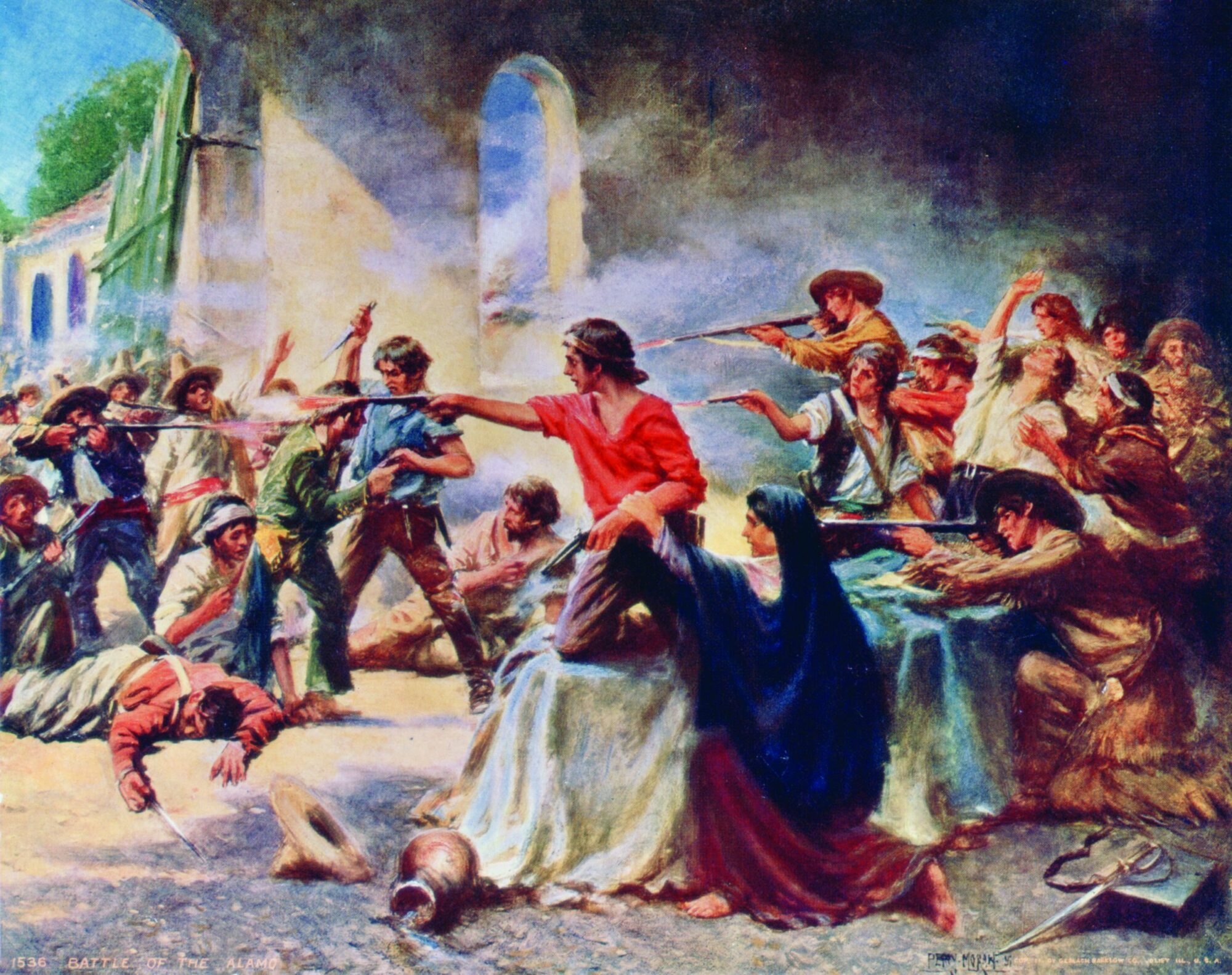


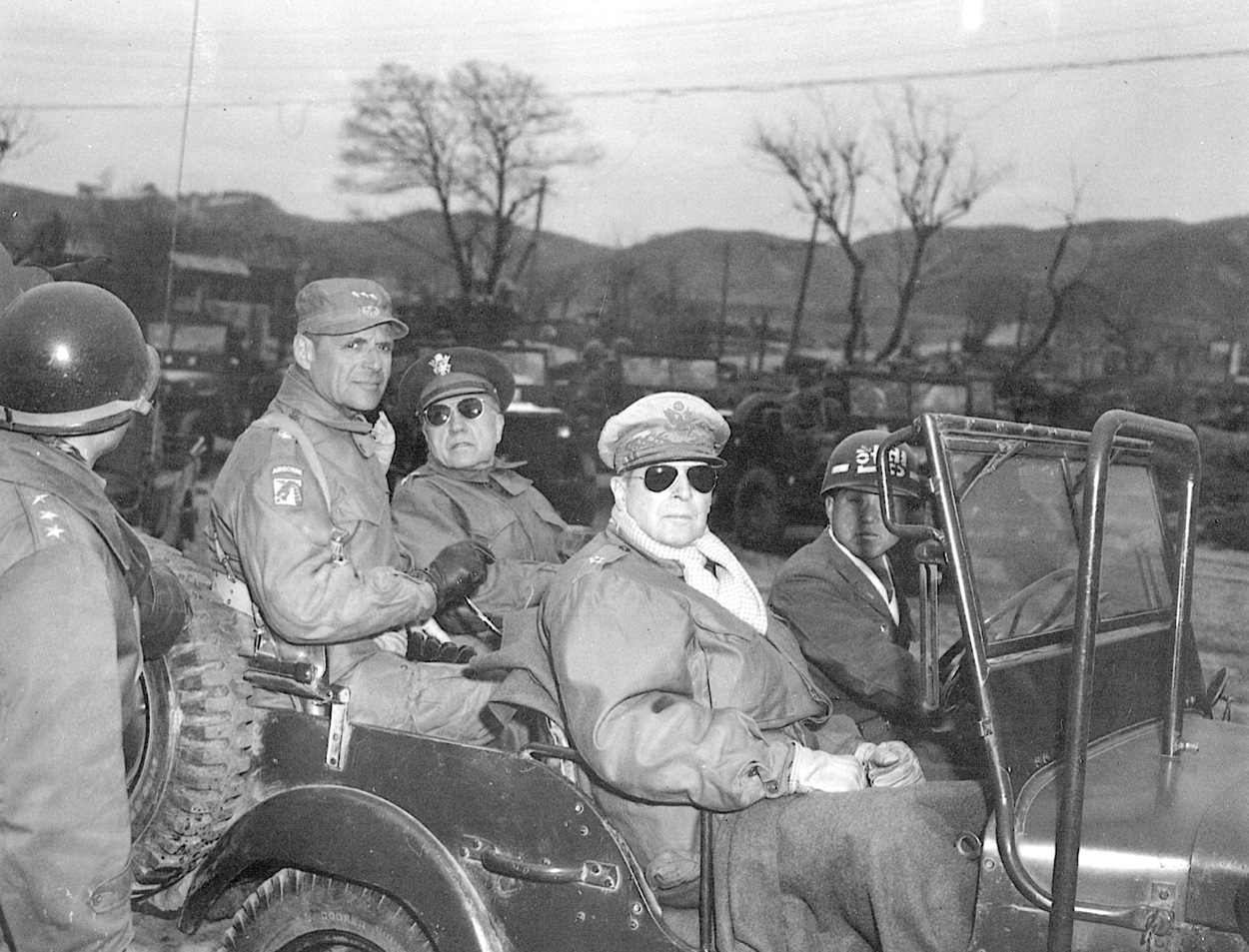
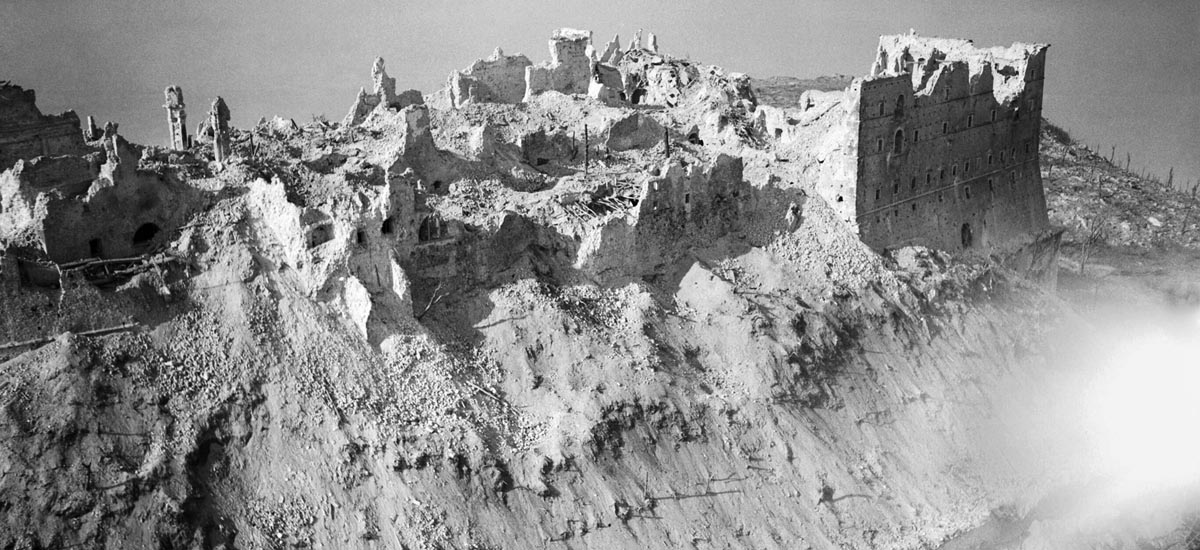
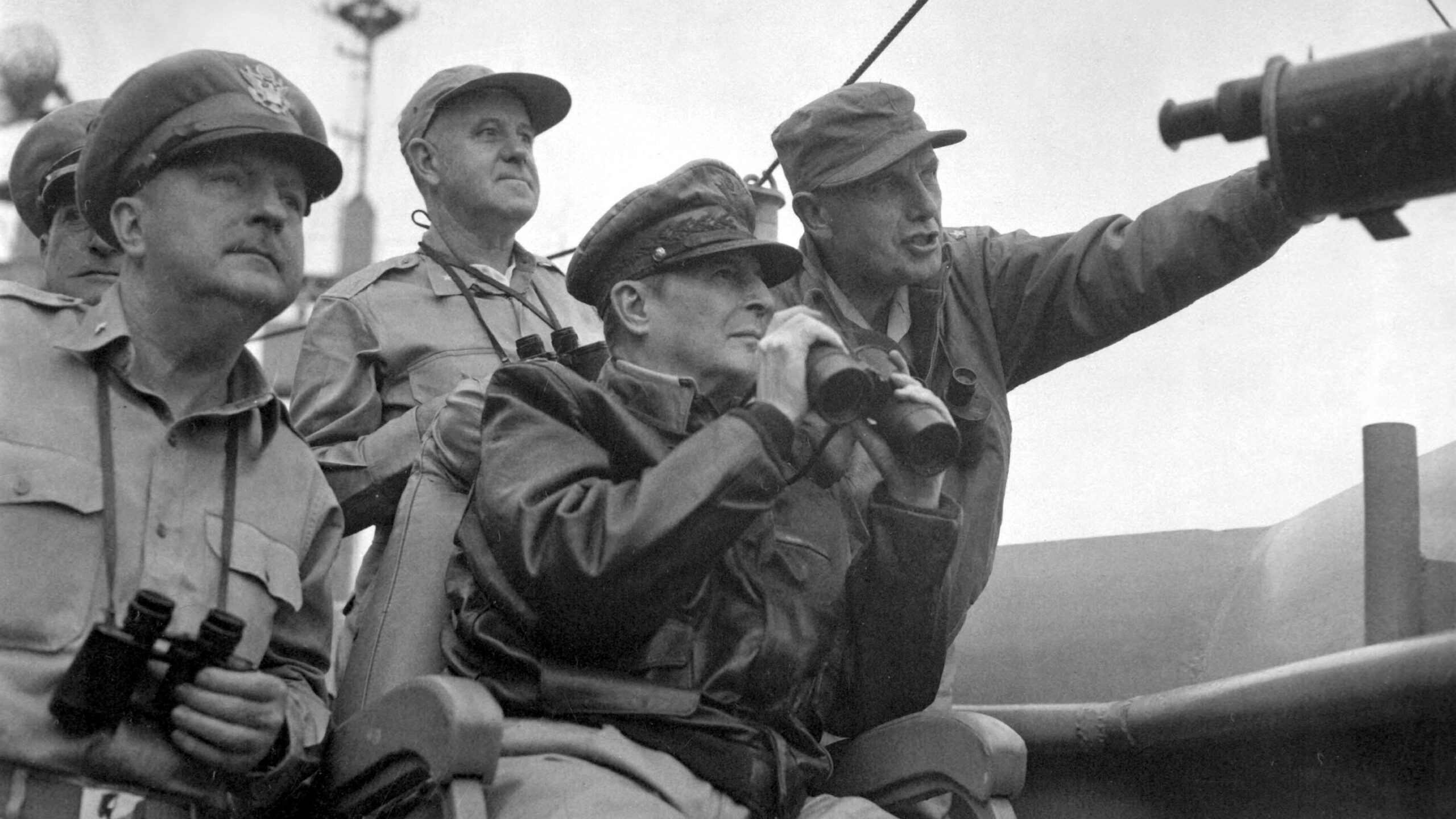
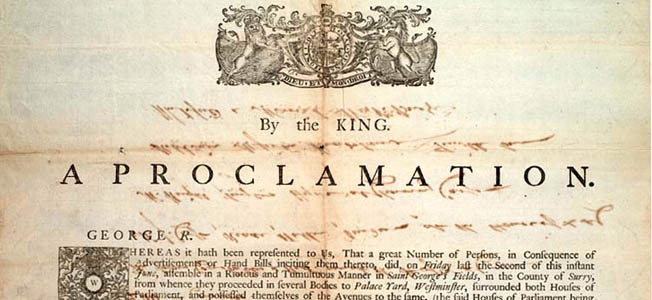

Join The Conversation
Comments
View All Comments